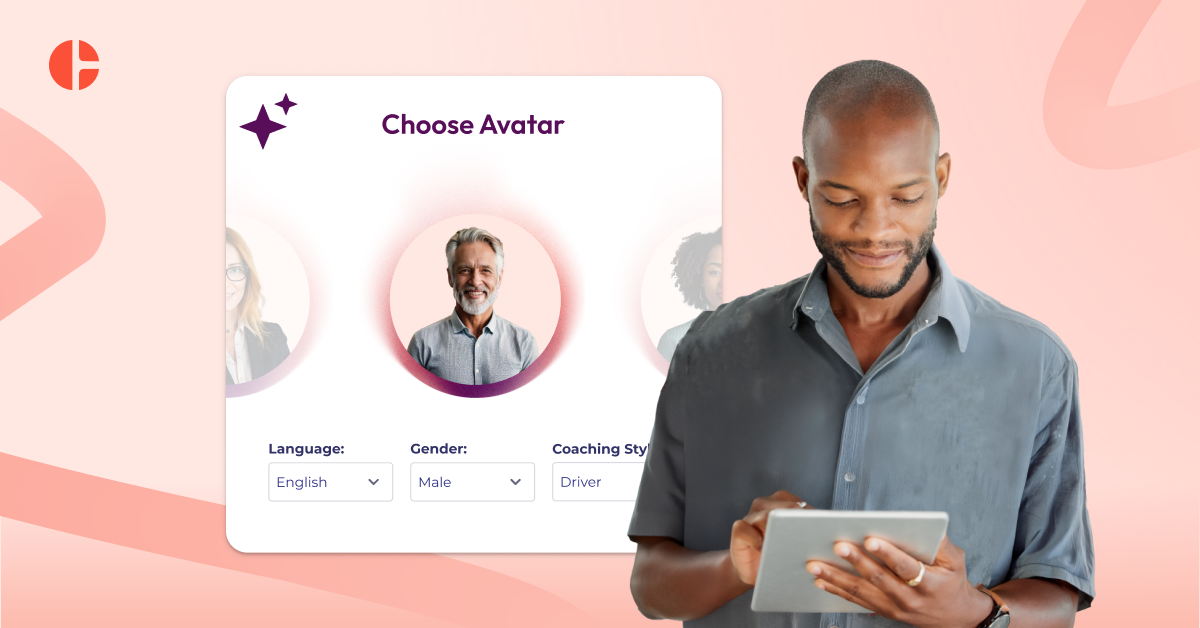Overstimulated: How To Handle Sensory Overload at Work

What is overstimulation?
Overstimulation is a state of being that is caused by too much sensory input. Experiencing sensory overload occurs when one is overwhelmed by information from their senses and struggles to process their environment.
Your senses are like messengers to the brain bringing information regarding your surroundings. Your brain processes this information and instructs your body to react to stimuli. When there is a large amount of sensory input your brain may struggle to interpret everything at once and become overwhelmed, or overstimulated. Your brain then becomes weighed down with so much data and cannot focus on processing anything.
Although anyone can experience sensory overload it is also a common symptom of certain health conditions like autism, ADHD, anxiety, depression, PTSD and Tourette syndrome.
Causes of overstimulation
You may become overstimulated when there is a large amount of competing sensory information in your environment. Imagine a crowd of people speaking to you all at once and you do not know who to listen to first. The following are potential triggers to be aware of:
- Exposure to bright fluorescent, or flashing lights
- Loud noises or various sources of noise at once
- Certain textures that are course, rough and scratchy
- Crowded spaces and large groups of people, which can contribute to overwhelming sensory input and lead to heightened reactions and physical symptoms related to sensory overload
Signs of overstimulation
- Poor focus
- Restlessness
- High irritability
- Brain fog
- Urge to resist sensory input
- Discomfort in your environment
- Sensitivity to loud noises or bright lights
- Textures and fabrics irritating skin
- Feeling overwhelmed: A common reaction to sensory overload, where individuals struggle to process excessive sensory input, leading to physical and emotional disruptions.
The impact of sensory overload on mental health
Sensory overload can have a profound impact on mental health, leading to feelings of anxiety, stress, and a sense of being overwhelmed. When an individual experiences sensory overload, their brain struggles to process the excessive sensory input, resulting in a state of hyperarousal. This heightened state can trigger the body’s fight-flight-freeze response, manifesting in physical symptoms like a racing heart, sweating, and trembling.Prolonged exposure to sensory overload can contribute to the development of anxiety disorders, including post-traumatic stress disorder (PTSD), social anxiety disorder, and generalized anxiety disorder. Individuals with sensory processing issues, such as those on the autism spectrum, are particularly susceptible to the negative effects of sensory overload on mental health.Beyond anxiety disorders, sensory overload can also play a role in the onset of other mental health conditions, such as depression, obsessive-compulsive disorder (OCD), and attention-deficit/hyperactivity disorder (ADHD). If you find yourself experiencing symptoms of sensory overload or are concerned about its impact on your mental health, it is crucial to seek support from a mental health professional. They can provide guidance and strategies to help manage and mitigate the effects of sensory overload.
How to deal with overstimulation
It can be challenging to know how to deal with overstimulation in the moment. Your brain is already struggling to focus and it can be hard to pull yourself out of the storm. The following list suggests some simple practices for dealing with overstimulation while in the midst of sensory overload:
Awareness
The first step in dealing with states of overstimulation is to be able to recognize them when they arise. You must become acutely aware of the signs of over-stimulation and understand when your senses are overwhelmed. With an awareness of when this state arises, you can pause and take the necessary steps to soothe yourself instead of allowing the overstimulation to continue.
Practice mindfulness
Once you have recognized that you are being overstimulated, take a moment away from your work and practice being present with how you are feeling. It is not necessary to judge or resist what you are experiencing. Simply watch what is happening and be mindful of the sensations in your body. This practice will reduce the stress in your body and improve your focus.
Breathing exercises
There are many different breathing techniques that can help to calm your nervous system and bring you into a state of relaxation, even in the most overstimulating environments. They are very simple to learn and can be practiced anywhere. Diaphragmatic breathing and pranayama techniques are known to reduce stress levels and blood pressure.
Ask for help
Do not be afraid to ask for what you need. Can you ask for the lights to be turned off or for the music to be turned down? Could you close a door or window to reduce external noise? Understand the root of overstimulation and take steps to reduce it.
Change your environment
Ask yourself if it is possible to change your setting. If the stimulation in your environment is beyond your control, do not feel like you are stuck. Can you take your work to a quiet corner or to a meeting room? Finding a quiet space is crucial for highly sensitive individuals to retreat to when feeling overstimulated. When you are overwhelmed, you may feel powerless to move or change your environment, but even a short break or a quick walk outside can make a significant difference.
Creating a safe space
Creating a safe space is essential for individuals who experience sensory overload. A safe space is a quiet, comfortable, and calming environment that provides a sense of security and relaxation. This can be a physical space, such as a bedroom or a designated quiet room, or a mental space, such as a meditation or mindfulness practice.To create a safe space, consider the following tips:
- Identify a quiet and comfortable location: Find a space that is away from loud noises, bright lights, and other sources of sensory stimuli.
- Minimize sensory input: Remove any sources of sensory input, such as televisions, computers, and phones, or use noise-cancelling headphones or earplugs to block out loud noises.
- Use calming colors and textures: Use calming colors, such as blue or green, and textures, such as soft blankets or pillows, to create a soothing atmosphere.
- Incorporate calming scents: Use essential oils or scented candles to create a calming scent, such as lavender or vanilla.
- Practice relaxation techniques: Practice relaxation techniques, such as deep breathing, progressive muscle relaxation, or meditation, to help calm the nervous system and reduce feelings of overwhelm.
By creating a safe space, individuals can reduce their exposure to sensory stimuli and provide their brain with a much-needed break. This can help to reduce feelings of anxiety and overwhelm, improve mental health, and increase overall well-being.
Tips to prevent overstimulation
As you reflect on past moments of overstimulation you can begin to learn more about your triggers and work towards preventing the state from reoccurring, or at least reducing its effect on your professional life.
Recognize your triggers
Each time you find yourself in sensory overload reflect and make a list of what factors contributed to this state. What were the sources of the overstimulation? Become aware of what is overwhelming for your senses so you can understand what changes to make in the future.
Improve your well-being
Overstimulation can be exaggerated when you are stressed and fatigued. Set an intention to improve your overall state of being to reduce your stress levels at work. Ensure you are getting the right amount of sleep, nutrition, hydration and movement. Working with a coach can help you to identify the areas you need to work on and provide you with the tools and strategies to improve your mindset and state of being.
Exposure to nature
sun exposure and fresh air early in the day will immediately reduce stress in the body, improve focus and elevate your mood. Consider implementing a morning walk before work or having your morning coffee outside. Getting sun exposure in the early hours will positively impact your energy levels for the rest of the day and will reduce the chances of overstimulation.
Reduce sensory input
Take a look at your habits and ask yourself where you can reduce stimulation. Can you leave your phone on ‘do not disturb’ until later in the morning? Can you reduce your screen time? Can you turn off certain notifications? Can you read a book on your commute to work instead of going on your phone? Can you eat in silence? Reduce any unnecessary stimulation to prevent becoming overwhelmed.
In conclusion
Overstimulation in today’s modern workplace is very common. With so many distractions competing for your attention is natural to become overwhelmed. Thankfully there are simple solutions such as reducing screen time and taking breaks in nature. If stress and overwhelm are beginning to have serious impacts on your daily life then working on your well-being with a coach can have a significant impact on your happiness. Taking small steps today can go a long way while investing in your well-being through coaching will improve every aspect of your life.
FAQ
Unlike content-first platforms or one-size-fits-all solutions, CoachHub combines global scalability, measurable outcomes, and coaching tailored for regulated, performance-driven environments. We're not just here to train, we partner to transform.
Yes. Coaching builds inclusive leadership, empathy, and adaptability. It equips managers to lead multi-generational teams and align diverse expectations across seniority levels and skill sets.
By focusing on resilience and mindset shifts. Our coaching solutions give managers and teams the tools to stay energised and engaged in high-pressure, regulated environments. This helps them maintain clarity, sustain performance, and adapt confidently through continuous change.




.svg)


.svg)





.png)



